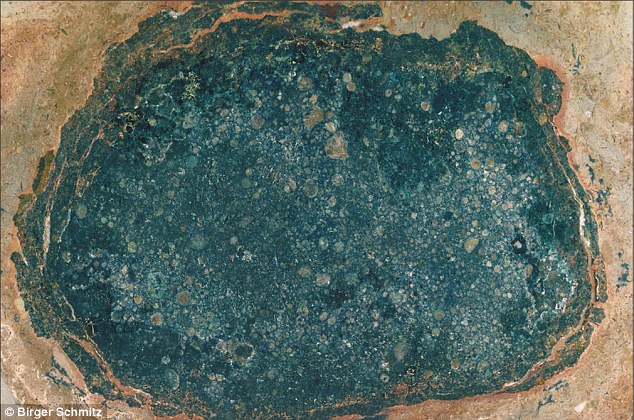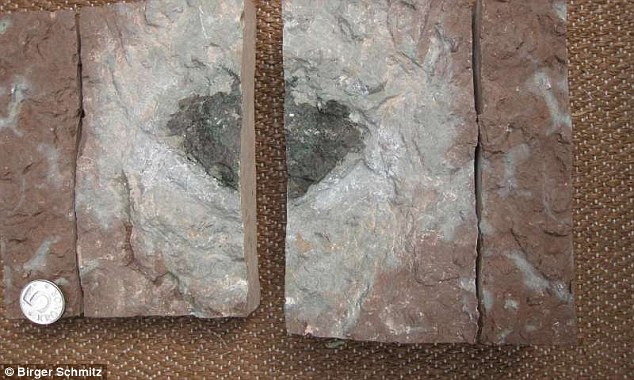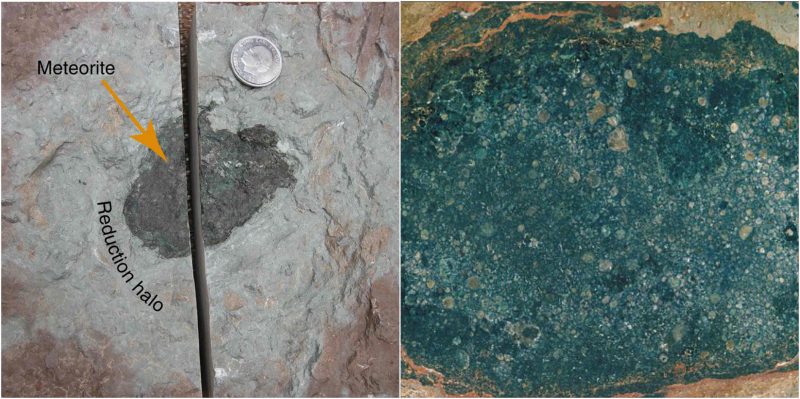A meteorite recently discovered has been dated nearly 470 million years old and is considered to be the first of its kind ever found.
Scientists have named the meteorite Ost 65; it was found in a maritime limestone quarry in Sweden. Experts believe that the meteorite fell during a particularly violent space collision.

470 million years ago, somewhere between Jupiter and Mars, two gigantic asteroids collided, the larger of which was estimated to measure between 100 and 150 kilometres long.
We know this because the Earth was showered with fragments of rock, which sliced through the atmosphere and fell to the planet’s surface as meteorites. Most of these fragments, called L chondrites, have a very similar chemical composition which suggests they they came from the same asteroids. L chondrites are the second most common type of meteorite on the planet

Ost 65, however, is different. Despite being found alongside more than 100 L chondrite type meteorites, it is not one of them – it has a unique chemical composition.
Ost 65 contained higher concentrations of rare isotopes of neon compared to the proportions of chondrites, as well as very high concentrations of iridium compared to the composition of Earth’s materials.
These higher levels of iridium are very rare on Earth. Scientists believe that the L chondrite meteors all came from the one of the asteroids involved in that collision almost 500 million years ago, whilst Ost 65 was a fragment of the other.

By using what is called cosmic-ray exposure, the team of experts found that the rock’s age was within one million years of the L chondrite collision. Although this doesn’t seem important, it does mean that their theory was correct; that an asteroid was responsible for the breakup.
Birger Schmitz of Lund university told reporters that the cosmic-ray exposure age of the meteorite shows that it could be a fragment of the impact that had broken up the L “chondrite parent body.”
He added that this could be the first-ever documented piece of an extinct meteorite. How does that work? It is because that type of meteorite doesn’t fall on Earth today because of the parent body being consumed by the collisions.
Schmitz explained that this meteorite fell to earth 470 million years ago. Because this is the first, and only, meteorite of its kind, scientists are still not sure what was once out there in space millions of years ago. They are only able to tell what is out there today because of newer fragments found.
